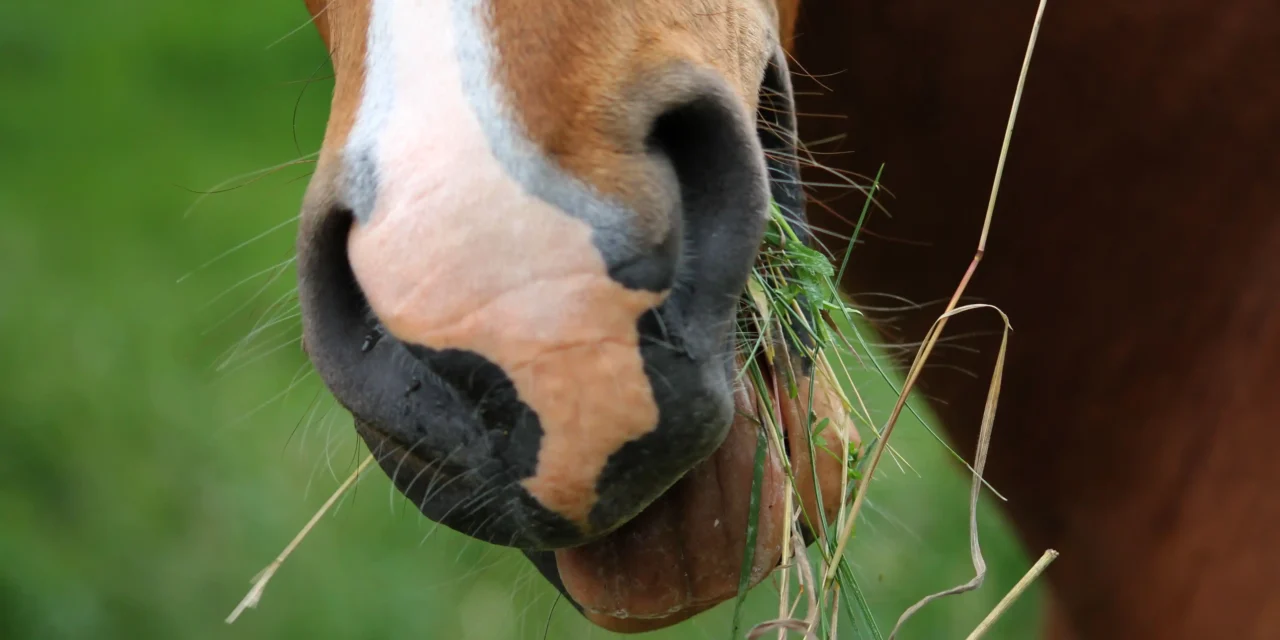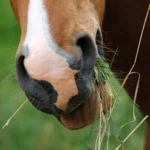Accurately assessing a horse’s body condition is an essential responsibility for any owner. An imbalance – whether it’s excess weight or being underweight – can have serious consequences for the horse’s health.
Assessing a horse’s body condition isn’t always straightforward — even experienced equine professionals can find it challenging. It’s especially important to consider the differences between horse types, as they vary greatly in build: a heavy draft horse has a completely different frame to a fine-boned Arabian, and the muscle mass of a fit competition horse can weigh just as much as the lymphatic and/or fat stores on an overweight animal.
But how can you tell if your horse is in the right body condition? This article looks at what you need to pay particular attention to when assessing your horse’s weight and overall condition — and how the Sanoanimal app can help you with this important task.
Why your horse’s body condition matters
A healthy body condition is essential for preventing problems such as insulin resistance, EMS, laminitis or circulatory issues. It’s equally important to give underweight horses extra support, especially through the winter, since they lack the energy reserves needed to cope with the cold.
Overweight and underweight in horses
Overfeeding is an increasingly common issue in horse management. It’s often caused by overly rich diets, insufficient exercise, and frequently compounded by genetic predisposition, especially in ponies and native breeds. The consequences can include laminitis, joint problems and metabolic disorders.
Underfeeding is often seen in older, unwell or poorly managed horses. The causes are varied: dental issues, parasites, or conditions like pseudo-Cushing’s can play a role, but so can hay that’s too low in nutrients, haynets with overly small holes, or simply too few feeding stations, leaving lower-ranking horses in the herd without enough to eat. Underfeeding weakens the immune system and can lead to a loss of muscle mass, severely impacting the horse’s quality of life.
Muscle, fat or retained lymph?
Another challenge when assessing a horse’s condition is that not every increase in size or roundness is due to fat. Alongside genuine fat deposits, you might actually be seeing fluid build-up — specifically, retained lymph. This can result from a diet too rich in sugars, lack of exercise, or a metabolism that’s out of balance.
Sugar plays a key role here. It’s the main fuel for muscles during movement. However, horses have only a limited ability to store excess sugar as fat.
One often overlooked source of sugar is hay. Analysis frequently reveals surprisingly high sugar levels — figures of up to 16% are not uncommon, which is well above the recommended range. Feeding hay like this without ensuring the horse has enough exercise to burn off the sugars, or sufficient muscle to process them effectively, can lead to metabolic issues. This process produces metabolic waste products that accumulate in the connective tissue and cause increased lymph fluid retention. As a result, the horse may appear puffy or bloated, even though this is not due to extra fat or muscle mass.
Instead of resorting to drastic dieting in such cases, the priority should be to lower the sugar content of the horse’s feed and give targeted support to kidney function. Once the excess lymph is cleared, the apparent overweight often reduces significantly — revealing that there was never really as much “extra horse” there as it seemed.
There are, however, certain horse breeds that have a tendency to store excess energy primarily as fat. Unlike in humans, this often doesn’t show up as obvious fat pads but instead as so-called fat streaks within the muscle itself. This means an overfed horse can appear well-muscled at first glance — even if it hasn’t been trained accordingly. All the more reason to take a closer, more critical look.
Why the traditional BCS method isn’t always reliable for assessing horses
The traditional Body Condition Score (BCS) system is only moderately suited to assessing horses. This is largely because horses vary greatly in their body shape and build, depending on breed, age and purpose. A warmblood has completely different physical characteristics compared to a Shetland pony or a heavy draft horse. Classic BCS charts don’t account for differences in muscle mass, fat distribution or breed-specific proportions, making it easy to misjudge an individual horse’s true condition.
How the Sanoanimal app can help
The Sanoanimal app (available on the Apple Store and Play Store) gives horse owners a practical tool to better understand their horse’s nutritional and overall health status. It guides you through assessing different parts of the body, factoring in breed type, to help determine your horse’s true condition. Importantly, the app doesn’t just indicate whether your horse is under- or overweight — it also helps distinguish whether what you’re seeing is fat, fluid (lymph) build-up or healthy muscle.
It also allows you to estimate your horse’s weight by taking body measurements — especially useful if you don’t have access to a weighbridge or horse scale.
The app also lets you keep detailed records of notes, feeding plans and observations, so you can track changes in your horse’s condition over time. This is especially valuable for horses with chronic issues such as EMS or a tendency to lose weight, as owners can quickly see whether their management strategies are having the desired effect.
Conclusion
Assessing a horse’s body condition takes experience and always needs to be done on an individual basis. The Sanoanimal app is a valuable tool to help determine whether a horse is overweight, underweight or in good condition. Based on this, you can make the right adjustments to support your horse’s health and performance.
If your horse’s metabolism is already out of balance, an experienced practitioner can help restore it through tailored feeding and exercise management.






